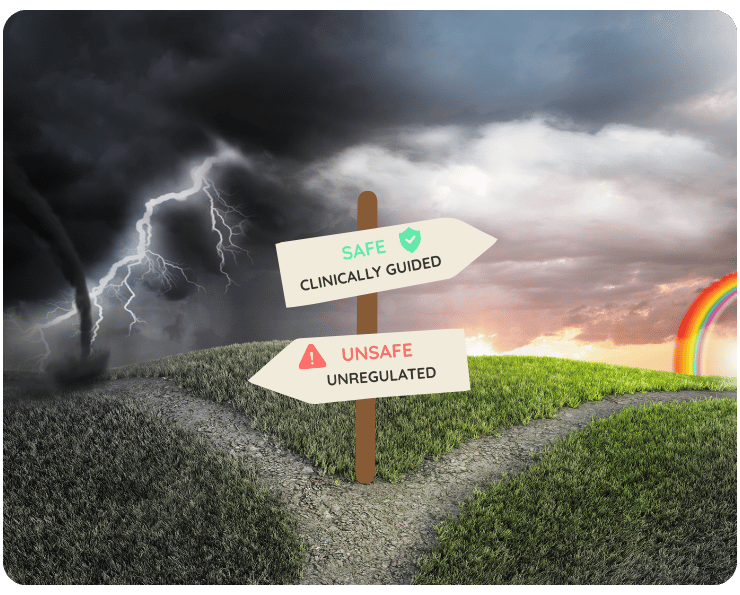WANT TO TRY IT YOURSELF? Educators can create a demo account to see how Alongside helps students navigate relationships or whatever they are struggling with
As trusted adults in students’ lives, school counselors, social workers, and administrators are uniquely positioned to identify the early warning signs of dating violence and equip students with the tools to build safe, respectful relationships.
Yet the topic of teen dating abuse often flies under the radar. It’s sensitive, complex, and not always visible. And when young people are involved in unhealthy or abusive relationships, they may not recognize it themselves—or may feel too embarrassed or afraid to speak up.
According to the CDC, about 1 in 12 U.S. high school students report experiencing physical dating violence, and 1 in 12 report experiencing sexual dating violence in the past year. But those are just the reported cases. Many more go undetected, especially when signs are subtle or masked by behaviors that appear typical of adolescence—like mood swings, withdrawal from family, or changes in friendships.
Why Schools Must Be Part of the Solution
While schools are not the only place where prevention and intervention should occur, they are one of the few environments where teens spend most of their time, interact with peers, and build relationships. That makes schools a critical setting for addressing dating violence.
Here’s why schools play such an important role:
- Early detection: Teachers and staff are often among the first to notice changes in behavior, attendance, or peer interactions.
- Education and prevention: Schools can proactively teach students about consent, boundaries, and communication through health classes and SEL programming.
- Safe reporting pathways: Trusted relationships with school adults provide students a potential outlet to disclose concerns they may not feel safe sharing elsewhere.
- Community collaboration: Schools can partner with parents, local organizations, and crisis response teams to ensure a wraparound approach to student safety.

What to Watch For: Red Flags That May Signal Abuse
Understanding what dating violence looks like in teen relationships is essential for early intervention. Abuse doesn’t always take the form of physical harm; emotional manipulation, control, and coercion are common and often harder to detect.
Some common signs school staff should be alert to include:
- Sudden withdrawal from friends or extracurriculars
- Anxiety about checking their phone or responding to messages immediately
- Dramatic changes in behavior, appearance, or academic performance
- Excuses for a partner’s jealous or controlling behavior
- Visible injuries paired with vague or inconsistent explanations
These signs are not always definitive proof of abuse, but they should raise concern—especially if multiple are present.
Start with Education: Empowering Students with Knowledge
Creating a culture of prevention means helping students understand what healthy relationships look like before they find themselves in harmful situations. School-based programs should include:
- Lessons on healthy communication, consent, and respect for boundaries
- Opportunities to reflect on values and relationship goals
- Strategies to seek help or intervene when a peer is in trouble
- Space to talk about real-world situations in a safe, nonjudgmental setting
Consider bringing in local advocacy organizations for presentations or workshops. Encourage student-led awareness campaigns during Teen Dating Violence Awareness Month (February). And ensure your health curriculum addresses not just biology, but relationships and emotional safety.
How Alongside Can Support Students in Navigating Relationships
Alongside offers a powerful layer of support for students who may be experiencing relationship distress even when they haven’t yet voiced concerns out loud. Here are a few of Alongside’s features that can help:
- Boundary-Setting Chat Module: Through an AI-assisted conversation (see video demo at top of post), students can explore what healthy boundaries look like in friendships and dating. The interactive module teaches assertive communication, personal rights, and how to respond to pressure or guilt-tripping—skills that many students haven’t yet learned to apply in real life.
- Screening and Crisis Detection: Alongside’s clinically-informed chat design can identify patterns in student responses that suggest distress, coercion, or isolation. When signs of potential abuse are detected, the system can flag these to the school’s support team—helping intervene earlier while preserving student confidentiality.
- Private, On-Demand Support: Students can access the platform anytime, whether they’re at school or home. For students who feel too overwhelmed or ashamed to talk face-to-face with an adult, Alongside offers a starting point—a place to reflect, learn, and take action at their own pace.
By combining psychoeducation, AI-assisted coaching, and early risk detection, Alongside acts as a scalable tool to support healthy relationship development across an entire student population.
Partnering with Parents: A Critical Piece of the Puzzle
Schools cannot do this work alone. Caregivers play a vital role in spotting warning signs and offering support. But many parents are unsure what to look for—or how to start the conversation.
To help bridge this gap, we recommend sharing this parent-focused resource in your school newsletter or family engagement channels:
👉 Is My Child in an Unhealthy Relationship? 5 Warning Signs Every Parent Should Know
This blog post outlines key indicators of abusive or controlling relationships and provides practical advice for how parents can respond in a calm, nonjudgmental way. From noticing isolation to understanding why teens might excuse a partner’s harmful behavior, it’s a resource designed to educate without alarming.
Final Thoughts
Dating violence prevention isn’t just about stopping harm—it’s about building a foundation of respect, empathy, and confidence that students carry into adulthood. When schools provide education, safe spaces, and responsive tools, they do more than intervene in crisis—they empower students to expect and demand healthier relationships for life.
Ready to try Alongside’s boundary-setting chat module yourself? Set up a demo account and try your first chat.



